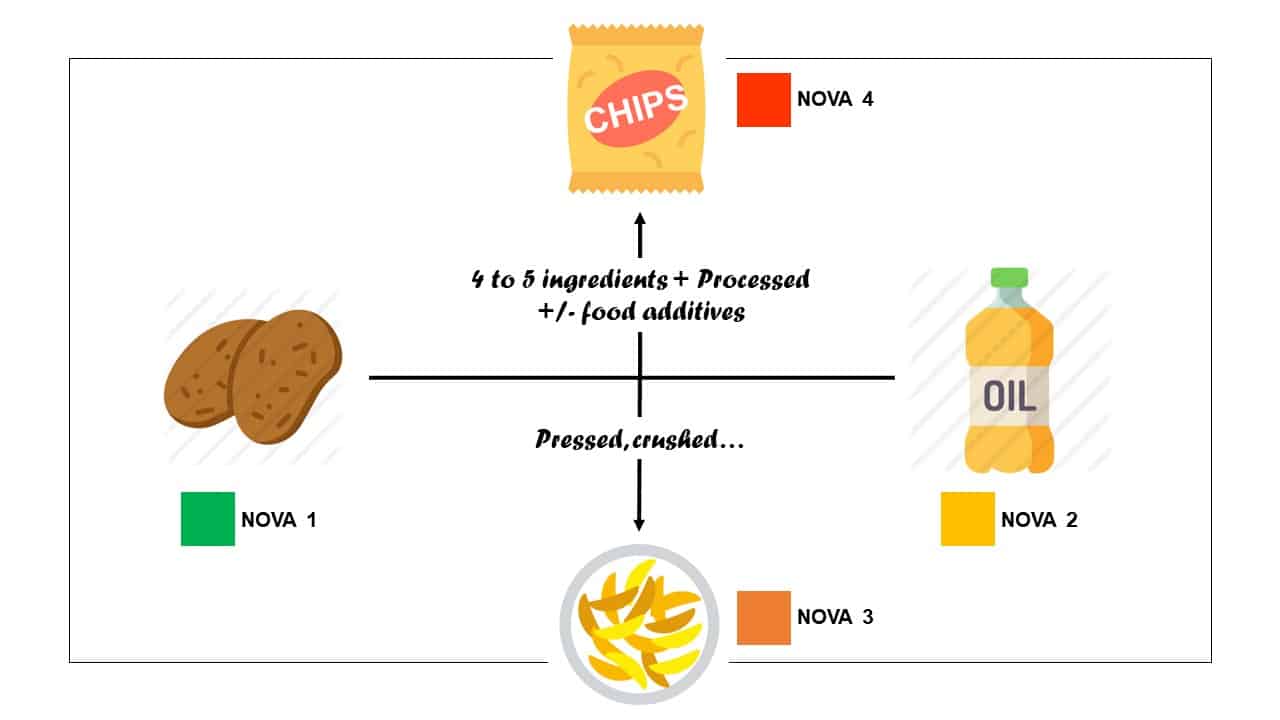The nutritional quality of so-called ultra-processed foods is making great noise. Several recent phenomena have created the rumour: they would change our state of health. After a long silence, ANIA (National Association of Food Industries) has chosen to defend itself through a position paper published on September 19.
[wcm_nonmember]
This article is premium. Sign in if you have an account. Otherwise, discover our premium offer.
[/wcm_nonmember]
[wcm_restrict]
What are ultra-processed foods?
The term ultra-processed foods is new and refers to industrial foods that have undergone a high level of processing. This classification called « NOVA » was developed by a Brazilian research team and validated by the FAO. NOVA defines 4 levels of food processing:
- Fresh or slightly processed foods[Minimally Processed]. Example: frozen vegetables, pasteurized milk.
- Processed culinary ingredients[Food Ingredients]. These are Group 1 foods which have been pressed, refined and crushed. Example: vegetable oils.
- Processed Foods. These are Group 1 foods, which have been processed and to which Group 2 foods have been added. Example: smoked salmon, cheese, canned vegetables.
- Ultraprocessed Foods. They contain 4 to 5 ingredients and may contain food additives, modified starches, hydrogenated oils… Example: a biscuit, a prepared dish, a fruit yogurt, but also sodas, chips… These products undergo technological and thermal treatments, sometimes important, which have led to talk about cracking. To understand « separation or degradation of molecules ». This latter category is very broad and includes foods that are very different from each other.
What is the impact of ultra-processed foods on health?
Ultra-processed foods are suspected of increasing the risk of obesity and breast cancer. These results come from an observational study conducted as part of the NutriNet-Santé cohort. The results were published in the British Medical Journal in January 2018. These initial conclusions will need to be refined, for example in the context of a specific clinical study, as suggested by ANIA in its position paper.
Confusion between ultra-processed and industrial foods
As with many subjects, confusion occurs when making amalgams. Indeed, it is regrettable to confuse industrial foods with ultra-processed foods. Not all industrial foods are ultra-processed. As all homemade recipes are not better than industrial products. What about a homemade mashed potatoes with overcooked potatoes, a homemade dish with too much fat or a homemade dessert that is too sweet? Who knows what will be observed if we study populations that cook with fat and sugar vs. populations that buy industrial products with low sugar/salt/fat?
Our opinion on the situation
While the conclusions drawn from the observation of the NutriNet-Santé cohort are very serious, it is always a pity to see the resulting media excitement and to point the finger at an entire sector, in this case the food industries. Nor is it reasonable to think that an entire sector, which includes nearly 18,000 companies in France, aims to poison the consumer. Some actors may behave inappropriately, but it is also important to acknowledge the efforts of most of them to provide a qualitative food. For more information, you can read ANIA’s position here. And let’s wait for more detailed results to conclude!
[/wcm_restrict]












